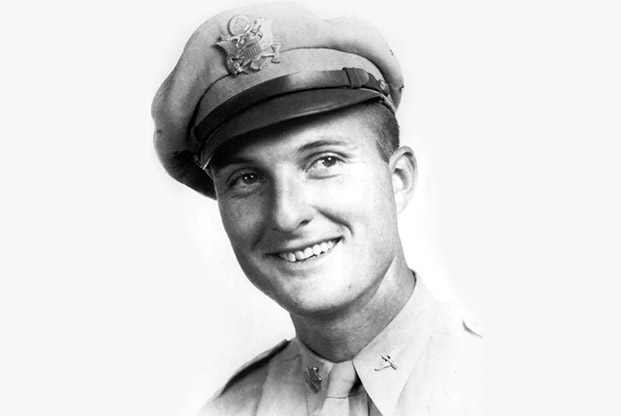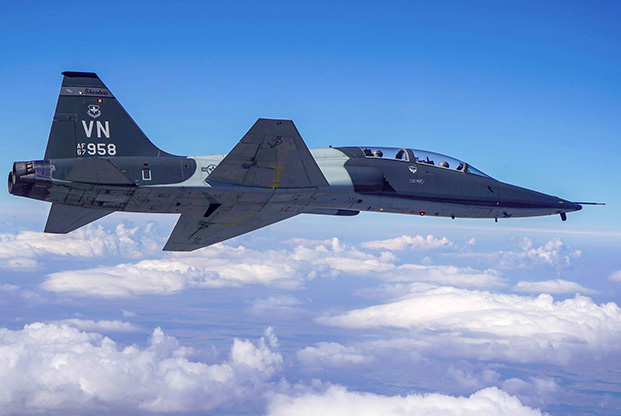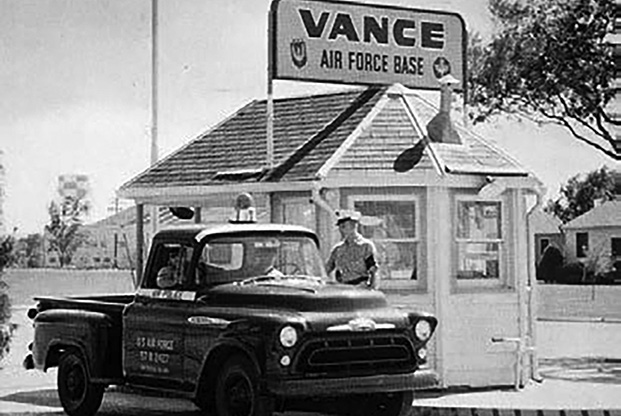
Col. Leon Robert Vance Jr. Photo: USAF
Leon Robert Vance Jr., born Aug. 11, 1916, in Enid, Okla., seemed destined for the air. His father was a flight instructor and his uncle, a World War I pilot, was killed in France. Growing up, Vance ached to join the Army Air Corps.
In summer 1939, he got his chance, and he made the most of it.
Young Bob Vance graduated from West Point and was assigned to the infantry, but he wrangled a transfer into aviation. On Sept. 13, 1939, he arrived in Texas for his primary flight training.
From that point, it took Vance a mere four years to become a lieutenant colonel and deputy commander of a large combat force. He was truly a fast burner.
In late 1943, Vance trained on the B-24 bomber and became second in command of the 489th Bomb Group. In April 1944, the group formed up at RAF Halesworth, UK. Vance led the group on its first mission—a May 30, 1944, raid on a Luftwaffe base in Germany.
On June 5, 1944, the day before D-Day, the 489th attacked German coastal defenses at Wimereux, France. Vance commanded from the lead aircraft, positioned between the aircraft commander and copilot.
As the B-24 reached the target, German gunners unleashed intense flak. Vance’s B-24 took heavy damage. It continued its bomb run and hit the target. A final burst of flak killed the pilot and wounded the copilot and others. Vance himself suffered a grievous injury—his right foot was nearly severed from his leg.
Three engines were dead, the fourth was laboring, and the bomber was rapidly losing altitude. The copilot prevented a stall by putting the bomber into a steep glide. Despite his injuries, Vance took command of the ship, feathered the three dead props, and shut down the fourth engine, optimizing a glide to the English Channel.
Reaching the English coast, Vance determined the bomber was too badly damaged to land. Plus, a 500-pound bomb was hung in the bomb bay. He ordered most of the crew to bail out over England. Vance then turned the stricken bomber back to sea, over which jumped the remaining crew members—all except two: Vance and a radio operator who was too seriously injured to move.
Vance hoped to save that crew member by ditching in the Channel. From a semi-prone position on the island between the crew seats, Vance coaxed the B-24 to a water landing. An explosion blew Vance clear of the wreckage. He never found the radio operator.
Vance was soon plucked from the sea by an RAF rescue team.
For his extraordinary valor and selflessness that day, Vance was awarded the Medal of Honor. There is a sad coda to the tale.
The award of the nation’s highest decoration for valor was made posthumously. Two months after the crash, Vance was returning to the US for treatment when his C-54 vanished and was presumed to have crashed in the Atlantic Ocean. His body was never recovered.
In 1949, the new United States Air Force renamed Enid AFB, Okla., in his honor. Today, Vance Air Force Base is the home of the 71st Flying Training Wing, a major unit responsible for training Air Force and allied student pilots.

A T-38 Talon trainer soaring over Vance AFB, Okla. Photo: USAF
LEON ROBERT VANCE JR.
Born: Aug. 11, 1916, Enid, Okla.
Died: July 26, 1944, North Atlantic Ocean
Nicknames: “Bob” and “Philo"
College: US Military Academy, West Point, N.Y.
Occupation: US military officer
Services: Army Air Corps, Army Air Forces
Main Era: World War II, Years Active: 1939-44
Combat: European Theater
Final Grade: Lieutenant Colonel
Honors: Medal of Honor, Purple Heart
Resting Place: Lost at sea

The gate at Vance, 1950s. Photo: 71st Flying Training Wing History Office
VANCE AIR FORCE BASE
State: Oklahoma
Nearest City: Enid
Area: 3.3 sq mi / 2,122 acres
Status: Open, operational
Opened as Basic Flying School-Enid: Nov. 21, 1941
Renamed Enid Army Flying School: Feb. 11, 1942
Renamed Enid Army Air Field: May 7, 1943
Deactivated: Jan. 31, 1947
Reactivated as Enid Air Force Base: Jan. 13, 1948
Renamed Vance Air Force Base: July 9, 1949
Current owner: Air Education and Training Command
Former owners: Gulf Coast Training Center, Flying Training Command, Training Command, Air Training Command
